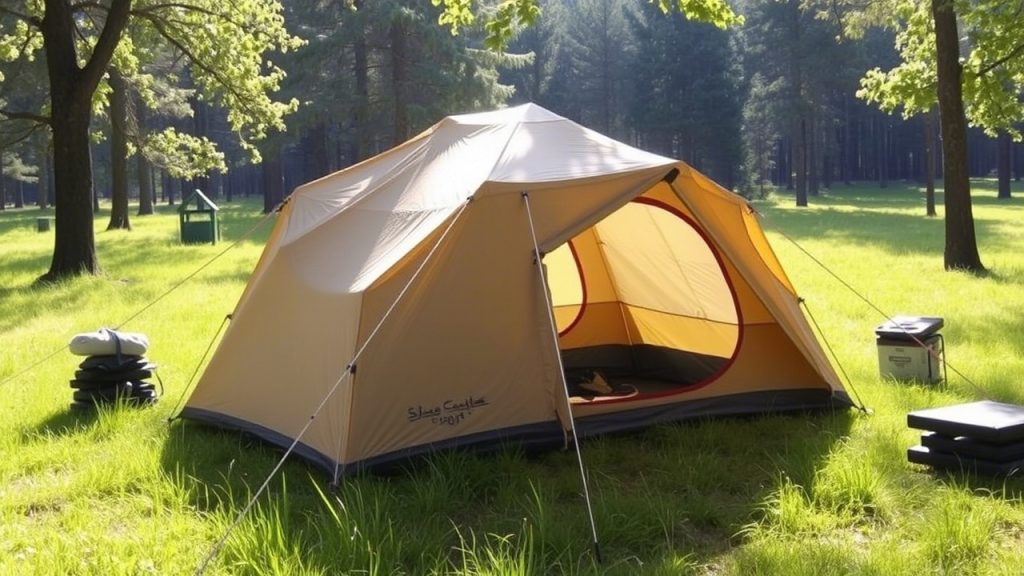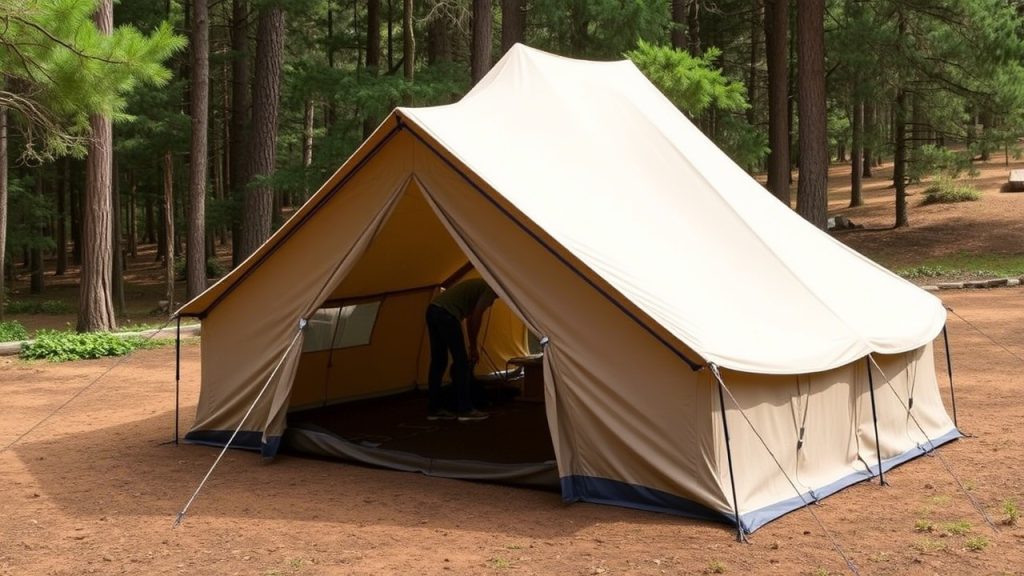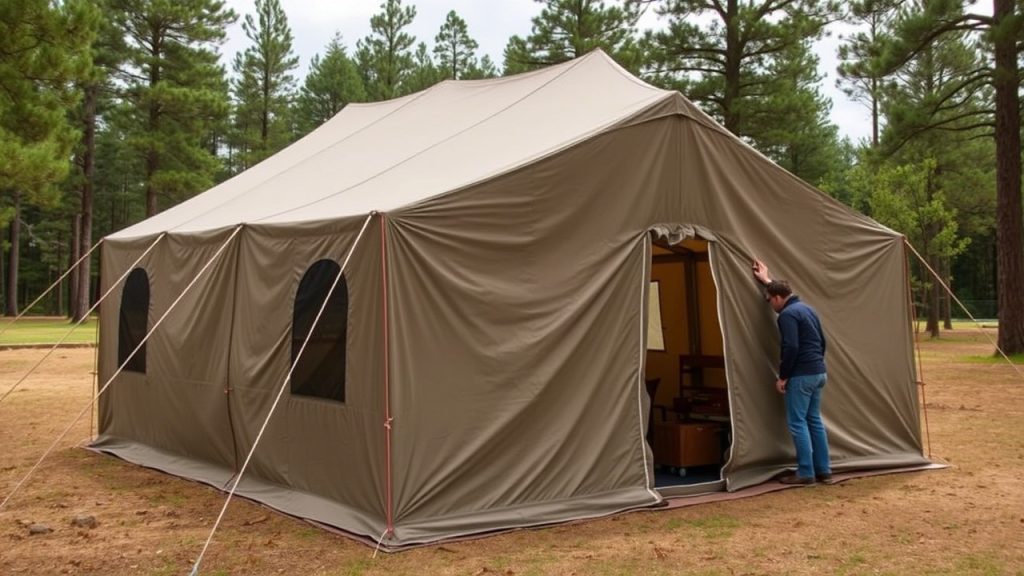Backpacking is one of the most rewarding outdoor experiences. It combines adventure, simplicity, and the unmatched joy of waking up in nature. But whether you’re a seasoned backpacker or a beginner, one thing is true: your choice of tent can make or break your trip.
When you’re heading out for a 7-day lightweight backpacking trip, your tent needs to be light, durable, easy to set up, and able to handle the elements. With so many options on the market, finding the right one can feel overwhelming.
That’s why we’ve done the research for you! We’ll break down the 6 best tents for lightweight backpacking in 7 days—carefully selected for their weight, durability, comfort, and performance. Whether you’re tackling the Appalachian Trail, the Pacific Crest Trail, or a rugged mountain loop, these tents will keep you covered.
Why Lightweight Tents Matter on a 7-Day Backpacking Trip
Before we dive into the top picks, let’s talk about why a lightweight tent is essential.
Weight savings matter: When you’re carrying everything on your back for a week, every ounce counts. A lighter tent reduces strain and helps you cover more miles comfortably.
Weather protection: Over seven days, you’re bound to face some weather changes. Your tent needs to handle rain, wind, and even snow if you’re in alpine terrain.
Ease of setup: After long days on the trail, you don’t want to wrestle with a complicated tent. Look for fast-pitch designs that are intuitive to set up.
Compact packed size: A good backpacking tent packs down small so it doesn’t take up precious space in your pack.
6 Best Tents for Lightweight Backpacking in 7 Days

1. Big Agnes Copper Spur HV UL2
Weight: 2 lbs 11 oz
Capacity: 2-person
Packed size: 4 x 19.5 in
Why it’s great: The Big Agnes Copper Spur HV UL2 is a backpacker favorite. It strikes the perfect balance between weight, space, and durability. With two doors, two vestibules, and steep sidewalls, you get excellent livability without sacrificing weight. It’s freestanding and easy to pitch, and the materials are robust enough for rough weather. Ideal for solo hikers who like extra space or pairs looking to save weight.
2. NEMO Hornet Elite Osmo 2P
Weight: 2 lbs
Capacity: 2-person
Packed size: 5.5 x 19 in
Why it’s great: The NEMO Hornet Elite Osmo 2P is incredibly light but still provides decent interior space. The dual vestibules and two doors make it easy to store gear and come and go without disturbing your partner. Its Osmo fabric resists stretching when wet, and the minimalist pole design keeps weight low. It’s perfect for ultralight backpackers pushing big miles.
3. MSR Hubba Hubba NX 2
Weight: 3 lbs 4 oz
Capacity: 2-person
Packed size: 6 x 18 in
Why it’s great: The MSR Hubba Hubba NX is legendary in the backpacking world. Known for its durability, weather resistance, and fast setup, this tent is ideal for backpackers who prioritize reliability over shaving every ounce. Its symmetrical pole design maximizes space, and the solid rainfly and bathtub floor keep you dry in downpours. A go-to for weeklong trips on unpredictable terrain.
4. Zpacks Duplex
Weight: 1 lb 3 oz (19 oz)
Capacity: 2-person
Packed size: 8 x 5 in
Why it’s great: The Zpacks Duplex is a dream tent for ultralight hikers. Made from Dyneema Composite Fabric, it’s incredibly light, fully waterproof, and very durable. It’s a non-freestanding tent, meaning you’ll need trekking poles for setup—but that’s part of why it’s so light. If you’re aiming for a sub-10 lb base weight, this is one of the best tents on the market.

5. Tarptent Double Rainbow
Weight: 2 lbs 10 oz
Capacity: 2-person
Packed size: 5 x 20 in
Why it’s great: The Tarptent Double Rainbow is a versatile and affordable ultralight shelter. It features a single-pole arch, two doors, and excellent ventilation. It can be set up as a freestanding tent with trekking poles, making it adaptable to a wide range of conditions. It’s a favorite among thru-hikers on the Pacific Crest and Appalachian Trails.
6. Six Moon Designs Lunar Solo
Weight: 26 oz (1 lb 10 oz)
Capacity: 1-person
Packed size: 11 x 4.5 in
Why it’s great: The Six Moon Designs Lunar Solo is a superb ultralight option for solo hikers. It offers a surprising amount of space, excellent storm protection, and a simple single-pole setup. It’s not freestanding, but its simplicity, weight, and reliability make it a top choice for serious long-distance backpackers.
How to Choose the Right Backpacking Tent
When you’re prepping for a 7-day lightweight backpacking trip, picking the right tent is critical. Here’s what to look for:
✅ Weight — For lightweight backpacking, aim for a tent under 3 lbs per person.
✅ Capacity — Are you solo or with a partner? Two-person tents offer more space, but solo tents save weight.
✅ Season rating — Most backpackers use a 3-season tent, but if you expect snow, consider a 4-season model.
✅ Setup — Freestanding tents are easier to pitch on rocky terrain; non-freestanding tents save weight but require good staking.
✅ Ventilation — Good airflow prevents condensation buildup, keeping you dry and comfortable.
✅ Durability — Look for robust materials that can handle rain, wind, and wear over a weeklong trip.

Essential Tips for a 7-Day Lightweight Backpacking Trip
Test your tent before you go — Set it up at home to make sure you know how it works.
Use a footprint — A lightweight groundsheet protects your tent floor from sharp rocks and moisture.
Practice Leave No Trace — Camp on durable surfaces and pack out all trash.
Pack smart — Distribute weight evenly in your pack, with heavier items close to your back.
Check the weather — Know what conditions to expect and bring the right tent and gear.
11 Frequently Asked Questions
1. How light should my tent be for a 7-day backpacking trip?
For a 7-day backpacking trip, aim for a tent under 3 lbs per person. Ultralight hikers often carry tents under 2 lbs.
2. Can a 2-person tent be used solo?
Absolutely. Many solo hikers prefer a 2-person tent for extra space and comfort, especially on longer trips.
3. Are non-freestanding tents difficult to set up?
They take a bit more practice, but once you’re used to staking them out and using trekking poles, they’re just as fast as freestanding tents.
4. How do I protect my tent from damage?
Always clear sharp rocks and sticks from your campsite, use a groundsheet, and store your tent dry when you’re home.
5. Do I need a 4-season tent?
Only if you’re expecting snow or extreme weather. For most 7-day trips in spring, summer, or fall, a 3-season tent is ideal.
6. How much should I spend on a lightweight backpacking tent?
Expect to spend between $300 and $700 for a high-quality ultralight tent. Cheaper models can work but may be heavier or less durable.
7. What’s the difference between trekking-pole tents and freestanding tents?
Trekking-pole tents save weight by using your hiking poles for structure, while freestanding tents have their own pole system and stand up on their own.
8. Can I share a 2-person ultralight tent comfortably?
Yes, but it’s tight. Look for tents with two doors and two vestibules for the best experience with a partner.
9. How do I reduce condensation inside my tent?
Ventilate! Leave the rainfly partially open when possible, and choose tents with mesh panels for airflow.
10. Is Dyneema fabric worth the price?
If you prioritize ultralight performance, yes. Dyneema is waterproof, extremely light, and durable but comes with a higher price tag.
11. Should I bring a tent or just a tarp for a 7-day hike?
A tent offers better bug and weather protection. Tarps are lighter but require experience and are best for dry, mild conditions.
Final Thoughts
Choosing the right shelter is one of the most important decisions for a successful backpacking trip. Whether you go with the ultralight Zpacks Duplex, the dependable MSR Hubba Hubba NX, or the affordable Tarptent Double Rainbow, you’ll be investing in better sleep, safety, and enjoyment on the trail.
A 7-day backpacking trip is an incredible adventure. With one of these 6 best tents for lightweight backpacking in 7 days, you’ll have the freedom to explore, the comfort to rest, and the confidence to handle whatever nature throws your way.
If you’d like, I can also help you prepare a buying checklist or comparison chart. Would you like me to draft that for you?





